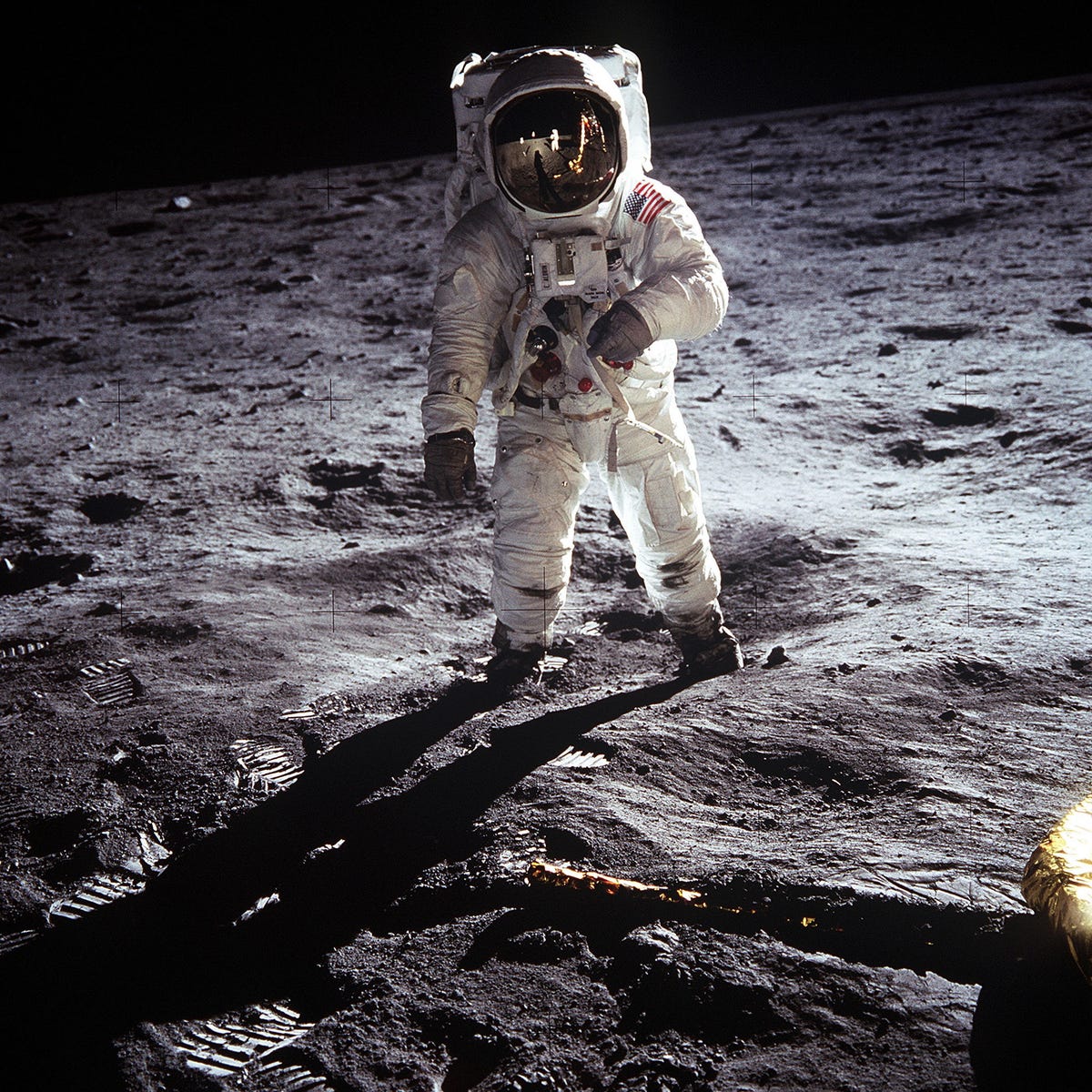Here are other moons worth visiting in person
NASA and Elon Musk want to go back to our moon, but there are a handful of other satellites in our solar system worth checking out.

One moon is not enough
This image of Buzz Aldrin on the lunar surface is one of the most iconic in all of NASA's history. It's been half a century since those first steps on the moon, and over four decades since a human last visited. Both NASA and Elon Musk's SpaceX say they could put more bootprints on the surface within five years, but what about the dozens of other moons orbiting our solar system's other planets?
Click through this gallery for a glimpse at a handful that would also be worth setting foot on.
Mars' Phobos is a rest stop without roads
By the 23rd century, when we're jetting around the solar system, it's going to be necessary to make pit stops somewhere before heading out into deeper space. The Martian moon Phobos is the ideal futuristic filling station. It's a big, asteroid-like body containing plenty of water that can be used as fuel for your family spaceship.
This moon is only 7 miles (11.3 kilometers) wide, with gravity about 100 times weaker than on Earth, just perfect for stretching your legs and letting the kids try their hand dunking on 50-foot tall basketball hoops. Just make sure they don't jump too high.
Go Phobos fo' the views
Phobos is used as a gateway to explore Mars in a number of proposed missions from the likes of the Planetary Society and others. Future space travelers would be treated to epic views of the Red Planet
University of Arizona planetary sciences professor Alfred McEwen says future visitors will want to "explore the disorientingly close horizons that are distorted by Phobos' small size and rugged terrain."
Io is the next hard core hot spot
Who says Jupiter's moon filled with volcanoes is a no-go? For years, visitors have trekked to the edge of the Earth's most active volcano: Hawaii's Kilauea. Surely the same draw will bring interplanetary tourists to check out Io's lava and crater-strewn hellscape.
Like any good adventurer, just be sure you're prepared with a good guide and gear to avoid accidentally being vaporized in a boiling caldera, poisoned by the toxic atmosphere or compromised by the high-radiation environment.
Europa is just literally cool
Jupiter's moon Europa is quite different from Io. Instead of lava, it's covered in smooth ice concealing a salty sea. At certain spots the hidden ocean erupts through cracks in the ice that would make Old Faithful look like a backyard sprinkler.
A Europan cruise
Many suspect that Europa's dark salty seas could be one of the best places in the solar system to look for alien life. In fact, NASA has already looked into the idea of squid-like rovers to explore its depths. By the time humans make it there, it might be the best way to get around.
Serious slope-style on Saturn's Enceladus
Erupting plumes are even more plentiful on Saturn's ice-covered moon Enceladus.
According to Veronica Bray, a lunar and planetary scientist at the University of Arizona: "The spray of subsurface water likely supplies fresh snow for skiing, snowboarding and sledding, and the low gravitational tug of a moon with a diameter six times smaller than Europa means you can take on steeper slopes and get more air."
She also recommends packing tinted goggles for any distant future visits as Enceladus is the brightest moon in the solar system.
Ganymede is bigger, if not better
How could we not include the biggest moon in the whole solar system?
This big boy also orbits Jupiter, and observations suggest it has its own subsurface saltwater ocean as well. Ganymede's icy crust could be particularly thick, making that hidden sea harder to access.
But who needs to visit some deep dark ocean when you can hang out in Ganymede's oxygen-rich atmosphere and check out its brilliant auroral light shows?
Come prepared though, even with oxygen this moon's atmosphere is still too thin to support life.
Super spelunking paradise
For those with a pioneering spirit that don't mind the dark, Ganymede offers some unique opportunities for the most extreme exploring ever.
Just imagine descending for miles through a hole drilled in the moon's thick ice shell to explore its alternating water, snow and ice layers. Make sure your headlamp batteries are charged and your scuba tanks are full!
Sailing methane seas on Titan
Perhaps nowhere is more like Earth than Saturn's moon Titan. But don't let those picturesque mountains and lakes fool you. That's not water, it's highly flammable and stinky methane!
Still, with hydrocarbon rain and rivers, this is a world that will be irresistible to future explorers.
Extreme isolation on Neso
Sometimes you just want to take a trip to get away from everything. If that's the case, you might enjoy a view something like this as you cruise by Neptune and its largest moon, Triton, on your way to one of its most far-out and little-known satellites: Neso.
We don't know much about Neso, except that it's very far away from the sun and even from the planet it orbits. You'd have a hard time making out either. But you'd have the most pristine peace and quiet of your life while satisfied in knowing that you've taken moon exploring as far as it can go in our solar system.

